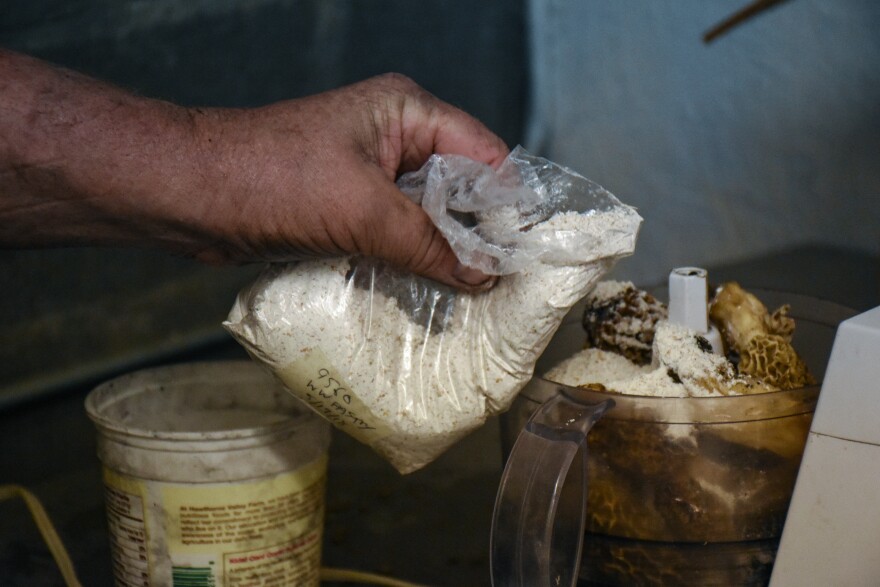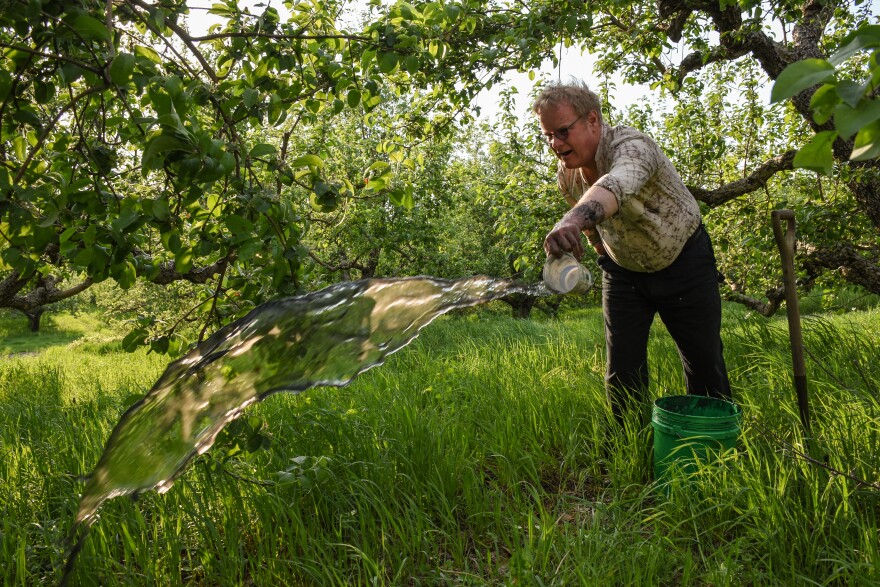Tad Montgomery can still remember when he first discovered morels.
He was five years old, working in the garden with his mom and siblings, when a thunderstorm suddenly rolled in. They all ran under some nearby trees for shelter.
“Mom, what are these things? They’re really weird!” exclaimed his sister, looking to the ground.

His mom had no idea what to make of the brown, brain-looking things emerging from the soil. But, being an amateur naturalist, she piled all the kids in the car and drove them, soaking wet, to the local library.
There, they unfolded their hands for the librarian, who knew exactly what she was looking at. “Morels! You found morels!” Montgomery remembers her yelling with glee.
And so began his lifelong, at times quixotic, pursuit of one of the most desired fungi.
Morels, which emerge in the spring, are known for their taste – they’re often cooked simply with garlic and butter. But what makes them perhaps even more desirable is how difficult they can be to track down.
“Economically they’re scarce,” said Bill Bakaitis, who teaches and writes about mycology in the Hudson Valley. “Anything scarce is going to command a price.”

Here in the northeast, chefs at high-end restaurants will pay upwards of $20 per pound for morels, depending on the mushrooms’ quality and prevalence that season.
It's not just the ingredients, but also the location, that's important
That’s one reason why people all over the world have been trying to figure out how to cultivate the mushrooms, farm them like a standard crop.
Many other mushrooms can be grown reliably, but morels are particularly tricky. While some claim to have developed methods that work, others are skeptical.
For his part, Montgomery is pretty good at foraging morels in the wild. He sells them to chefs in the Brattleboro area where he lives.
But more recently, he’s been taking a stab, quite literally, at cultivating them as well.

On a recent evening, he worked a pitchfork over the ground in an apple orchard in Lebanon, making small holes in the soil around the base of a tree. Next, he dipped a cup into a bucket filled with a dark liquid, and distributed that concoction over the holes he’d made.
The liquid contains morel spores, the reproductive unit of the mushroom. The recipe is secret. By Montgomery's thinking, though, it's not just the ingredients, but also the location, that's important.

That’s because morels are known to favor certain trees.
In the northeast, many mushroom hunters will tell you to look under elm or ash, and – importantly – apple trees.
Montgomery is trying to leverage this natural pairing. He’s betting orchards could be a key to this cultivation business, an idea others haven’t quite caught onto yet.
He’s offering to split any bounty with orchard owners. In this case, that's Steve Wood.
There isn’t any money changing hands. And though Wood wouldn’t mind having more morels on his land, he’s quick to point out he sees this whole endeavor as a long-shot experiment with little chance of success.

Judging by Montgomery’s results so far, Wood may not be wrong.
Actually, in terms of results, there’s little to report.
Morels often emerge with the first apple blossoms in the spring. The window this year has largely passed, with Montgomery seeing no fruit of his labor.
That’s despite treating more than a dozen sites over the past several years.
Still, he’s not losing hope, just adjusting the recipe to try again.
Maybe next spring, he smiles. After all, you really never know when they’ll pop up.







